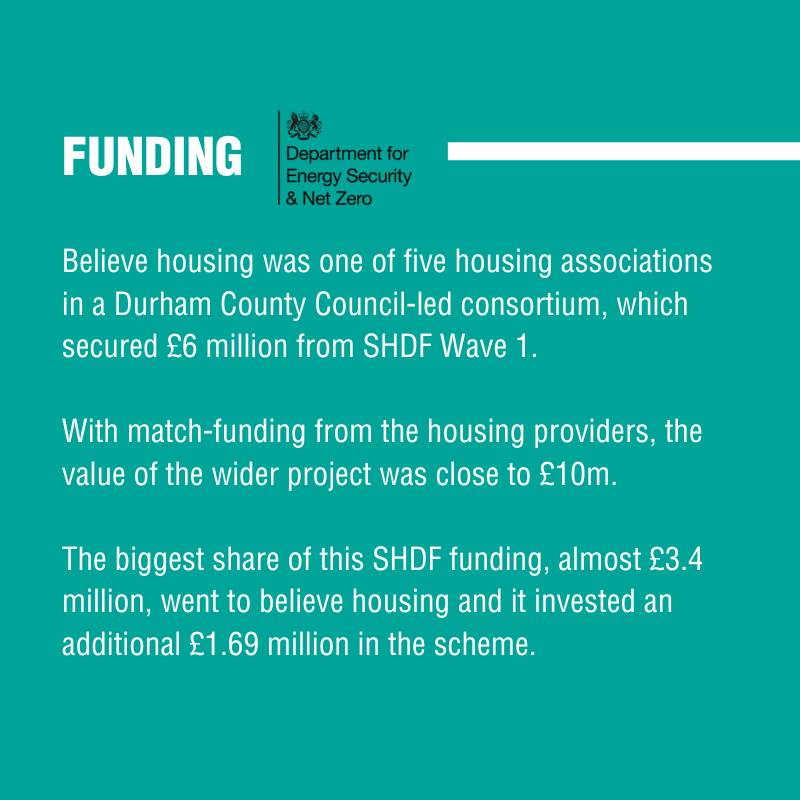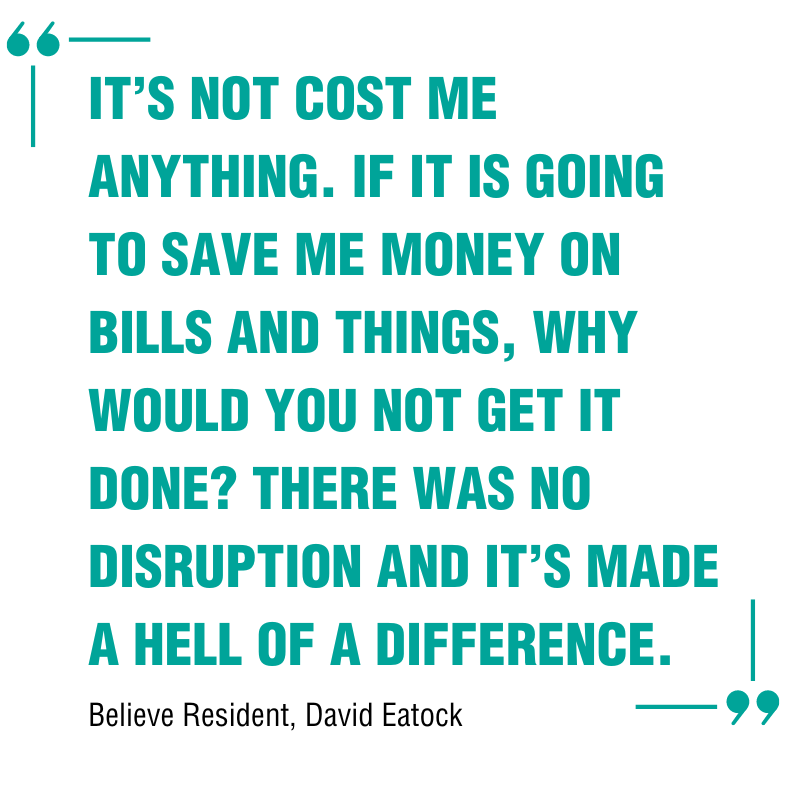Streamline surveys and checks to reduce disruption. Despite a focus on low-disruption measures, the requirements of PAS:2035 meant a lot of different surveys and checks were needed. Streamlining these as much as possible, for example by carrying out a post-works EPC at the same time as handover of works, helped to cut down on disruption to residents, improved access rates, and sped up the processing of paperwork.
Use information gained from initial surveys to improve targeting in future projects. Initial surveys determine early on if work is needed. Homes that can’t progress under the funded scheme are dropped as early as possible. Information from those surveys is fed back into the list of targeted addresses, so properties of a similar archetype can be given a lower priority for a survey. This ensures best value and use of resources. Over time, there should be a higher rate of success with the addresses targeted. Even where works don’t proceed, valuable property data has been obtained.
Prepare for a lot of administration and take a collaborative approach. Administration for the scheme was a greater burden than expected. Streamlining the process with a minimum number of live progress trackers shared between sub-contractors, principal contractor, and housing association eased this. A collaborative approach to paperwork ensured reporting and information to be held on asset databases is accurate and increased the wider team’s knowledge of processes such as EPC surveys.
Customer facing coordinators will help improve access. Despite the cost-of-living crisis, some residents did not engage or want the works. Providing the contractor’s customer experience co-ordinators with a believe housing phone number helped improve access, as did the contractors’ flexible approach to delivery.






